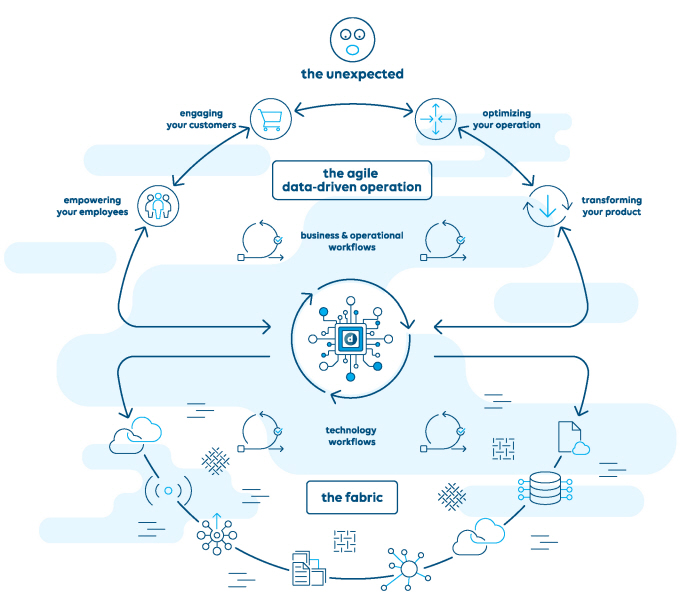About Digital Transformation
Today we are all catapulted into a new digital age, which is about to affect and fundamentally change pretty much everything you can think of. Digital Transformation is key to preparing an organization to operate and flourish in the new data-driven future, and to evolving into a so-called composable business fit for the emerging digital age.
Ultimately, it is all about 1) how you will ensure that your organization can easily and continuously transform its products, 2) how you can easily and continuously optimize your operation, 3) how you can create new innovative ways to engage with your customers, and 4) how you can ensure that everybody in your organization can easily access and leverage any data available in the organization for various purposes.
It is effectively much more about your future ability to do all these things easily and continuously, than about what exactly it is that you will be doing. Because the latter is unsure and unpredictable and will continuously change over time anyway.
How you will have to transform your products, how you will be further optimizing, how you will engage with your customers and users, and how you will empower your employees with data, that will continuously change year after year. Today is in the first place all about how you will set up your business so that you will be able to do those things easily and continuously.
Today you are building the foundation of your business for the coming decade, and you are defining your readiness to deal with the inevitable unexpected.

Those are also the exact key objectives that you need to keep in mind, because evolving towards an agile data-driven operation involves much more than simply choosing the right technology and “putting that technology into place”.
For example, a lot hinges on how the operation is re-built and re-designed conceptually, and how the entire operational technology stack is architected to create that agile operation. The latter does require careful consideration, as it is very easy to choose for the easy way forward and the path of least resistance, but that usually then also means that you completely give up on the very essence of creating an agile data-driven operation, i.e. creating an operation ready to continuously evolve. Simply taking the business and operation of yesterday and transposing it into the new technology ecosystem is not at all what this is about.
But as another example, the success of a Digital Transformation also heavily relies on the effectiveness of the accompanying Change Management programs. These determine how well you prepare your organization for the changes involved in the transition, how well you manage adoption and mitigate risks, and – very importantly – how well you deal with the human aspects that play into all of this. Because after all, a successful Digital Transformation has a fundamental impact on all imaginable aspects of the existing operation and business, and the human factor in this is not to be underestimated, especially when you consider the inherent resistance to change of both people and organizations.
Aside from these examples, there are many other things that are equally crucial for a successful Digital Transformation. This document further elaborates on the significance and defining impact of the methodology applied to manage the typical ICT integration and software technology projects required for Digital Transformation.